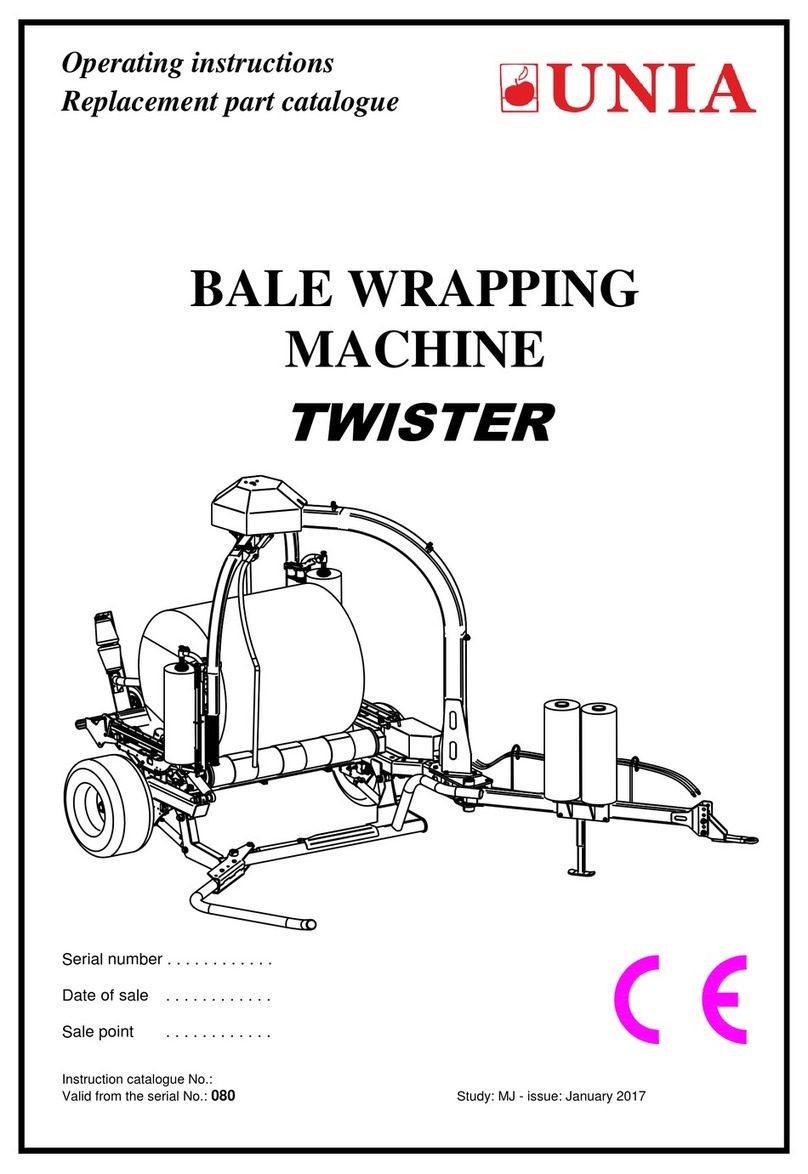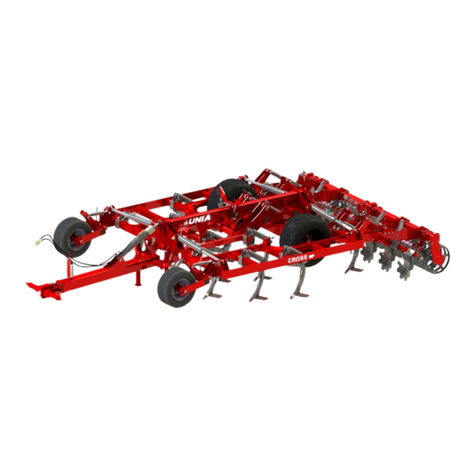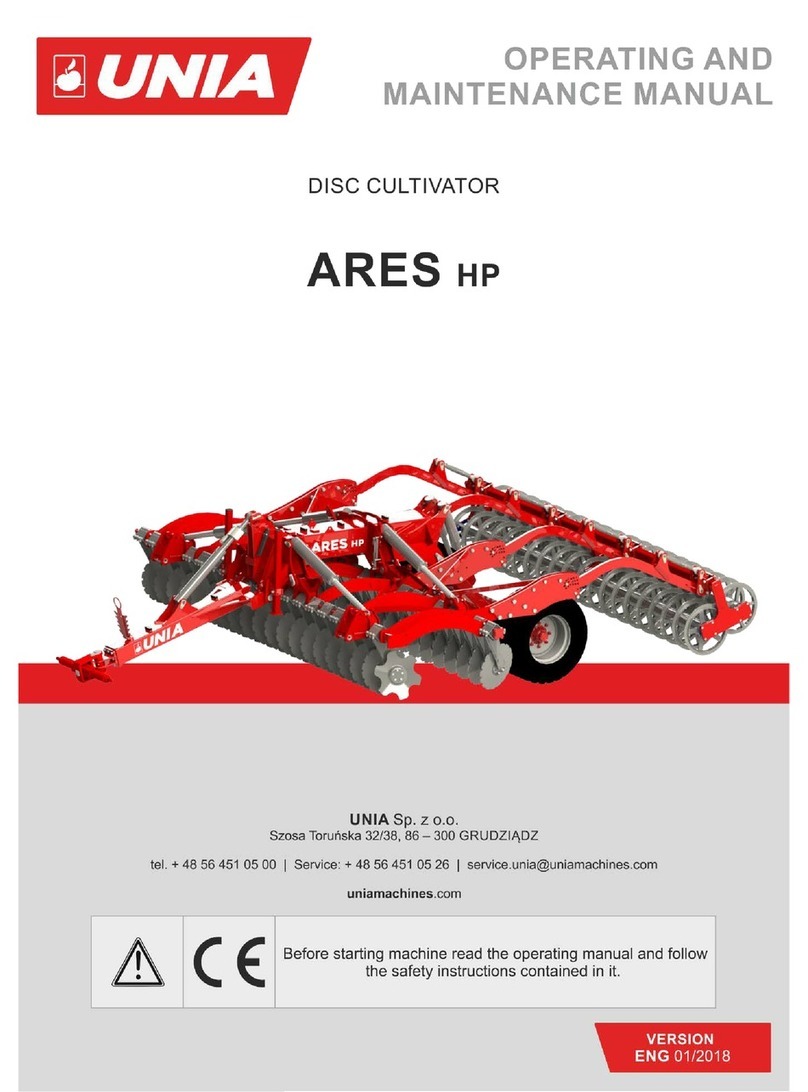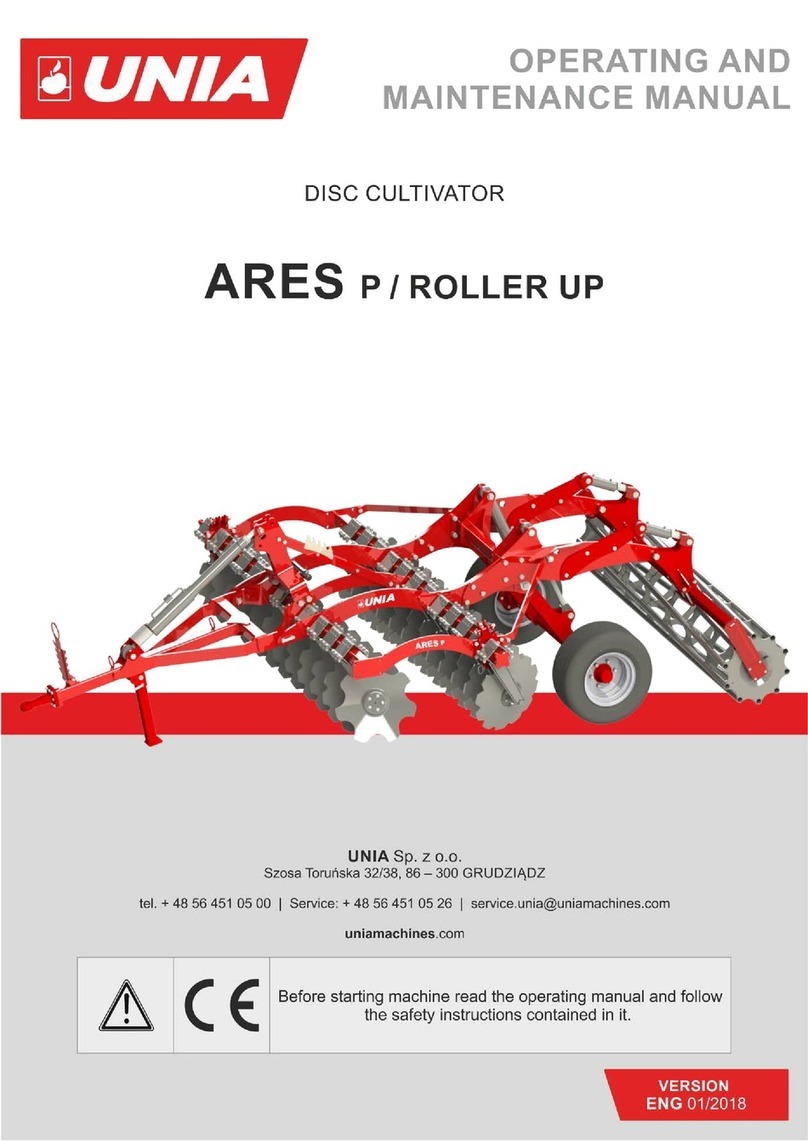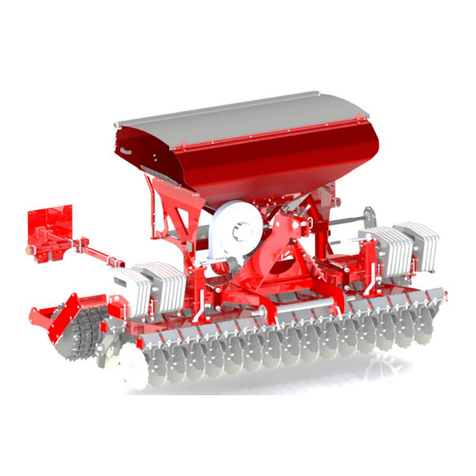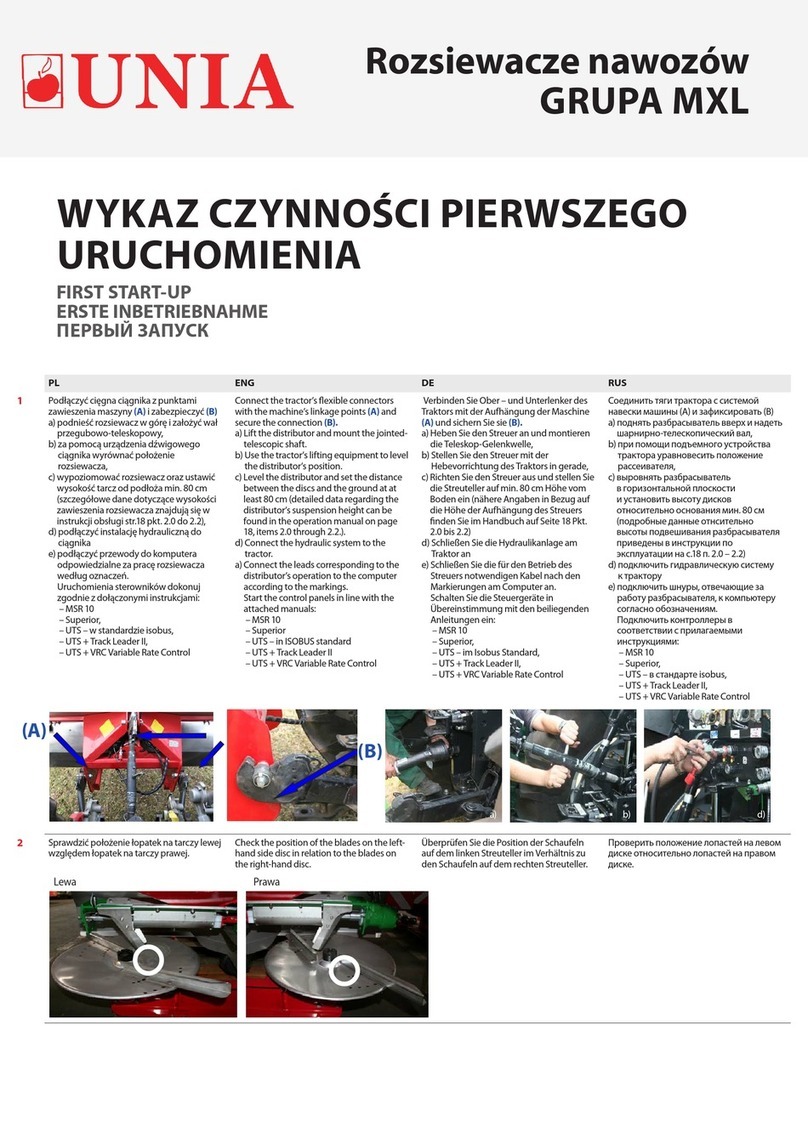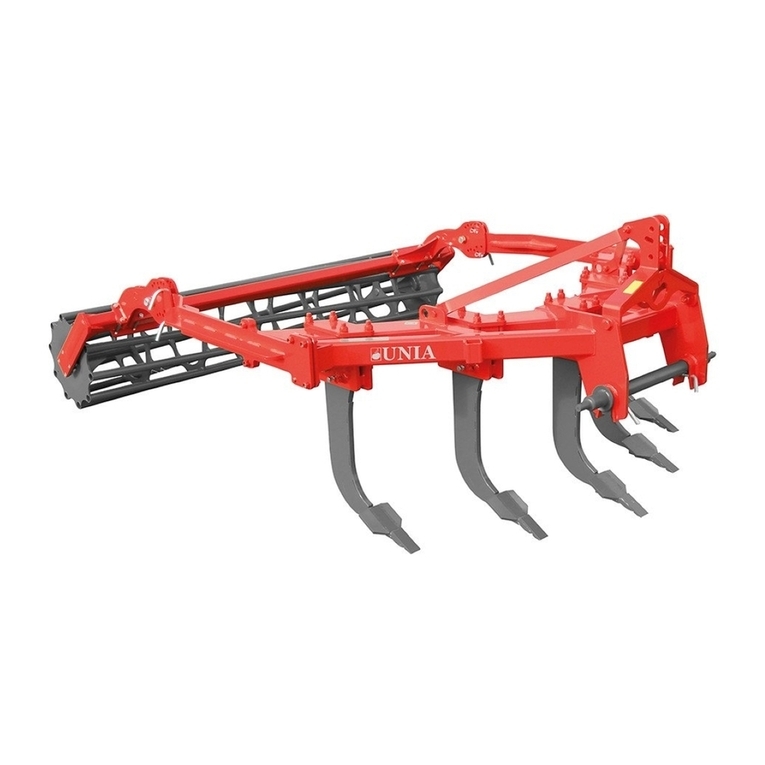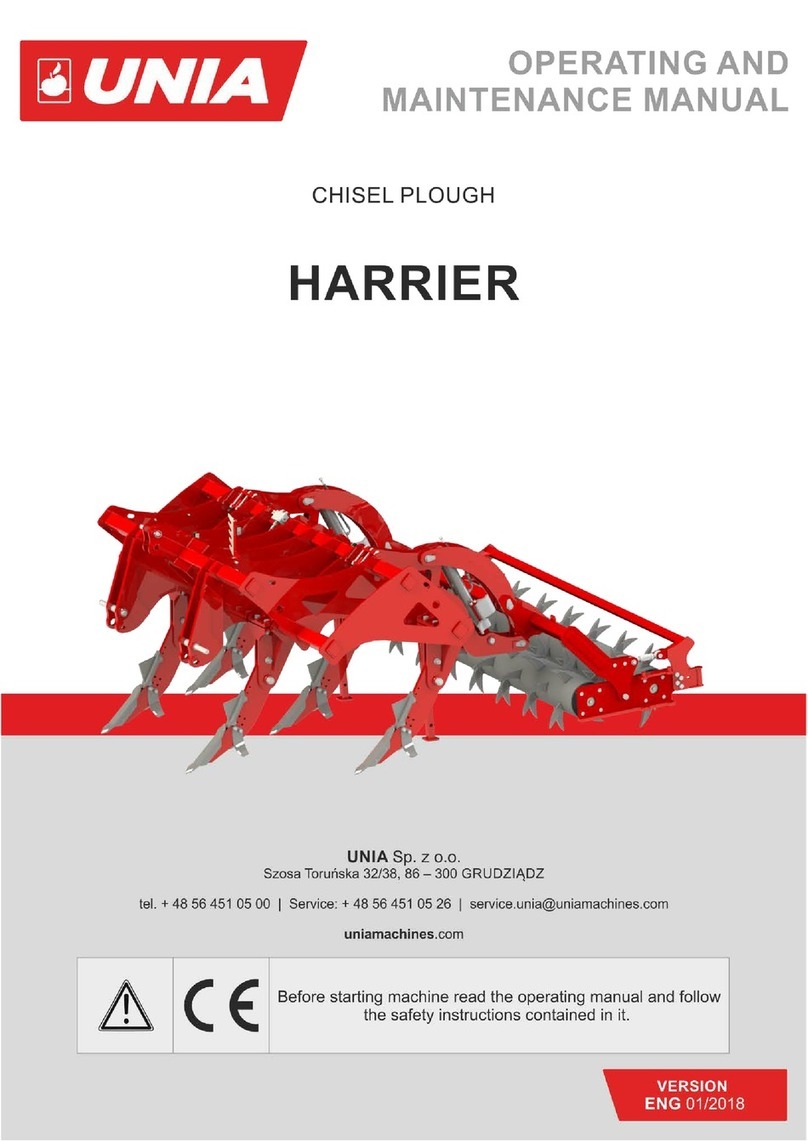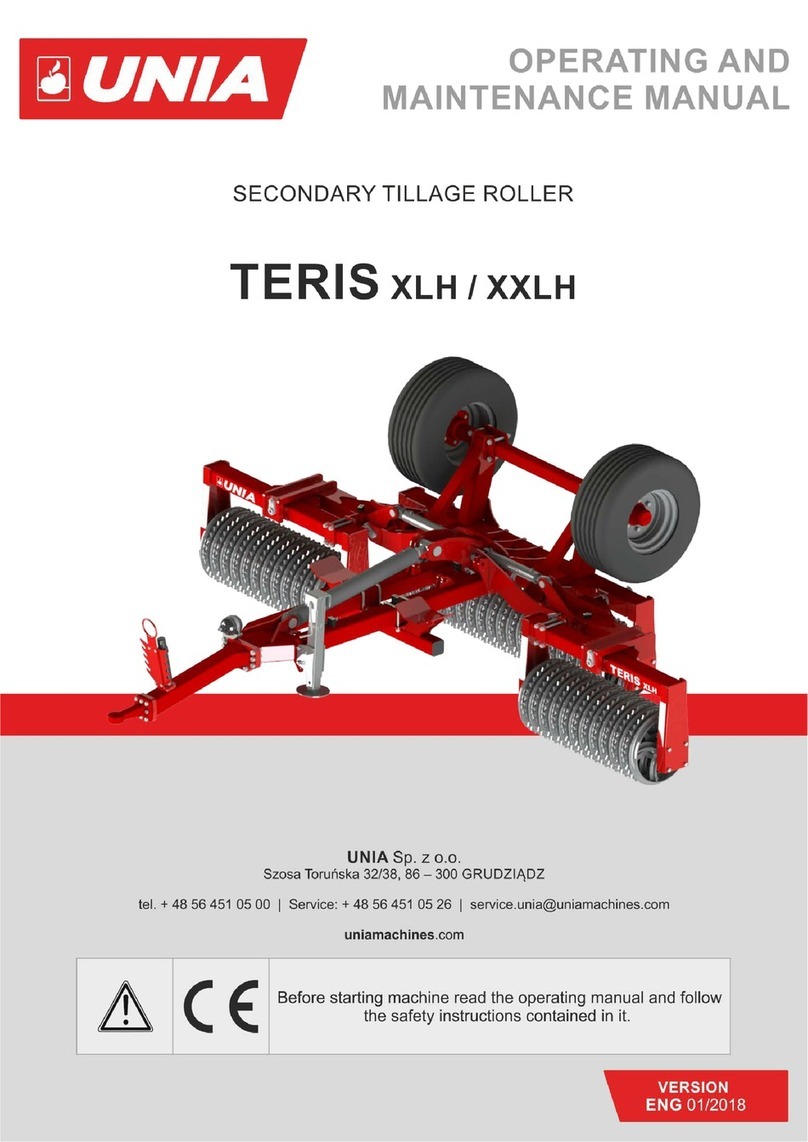OPERATING AND MAINTENANCE MANUAL ARES L
- 4 -
PREFACE:................................................................................................................................................ 5
1. Precautions.................................................................................................................................. 5
1.1 Before you Begin to Use Your Machine................................................................................... 5
1.2 Health and safety regulations.................................................................................................. 5
1.3 Servicing................................................................................................................................... 6
1.4 Transport on highways ............................................................................................................ 7
1.5 Safety Symbol .......................................................................................................................... 7
1.6 Nameplate ............................................................................................................................... 9
2. Technical and Identification Data.............................................................................................. 10
2.1 ARES L specifications ............................................................................................................. 12
3. Operating Manual...................................................................................................................... 19
3.1 First Start ............................................................................................................................... 19
3.2 Preparation of the Unit (Tractor + Machine)......................................................................... 19
3.3 Connection and Disconnection.............................................................................................. 20
3.3.1 Mounted machines............................................................................................................ 20
3.3.2 Semi-mounted machines................................................................................................... 21
3.4 Transport on highways .......................................................................................................... 22
3.5 Adjustment of the Cultivator................................................................................................. 23
3.5.1 Working Depth Adjustment on the roller.......................................................................... 23
3.5.2 Working depth adjustment on the drawbar (chassis option, drive) ................................. 23
3.5.3 Working depth adjustment on the tyre roller ARES L 4.5;6.0 DRIVE ................................ 24
3.5.4 Levelling fingers adjustment ARES L 4.5;6.0...................................................................... 24
3.5.5 Front skid adjustment (skid option) .................................................................................. 25
3.5.6 Adjustment of the external disc ........................................................................................ 25
3.5.7 Adjustment of the Folding Hydraulic System ARES L 4.5; 6.0 ........................................... 26
3.5.8 Deflectors adjustment (deflector option) ......................................................................... 26
3.5.9 Brakes adjustment (chassis with brakes option)............................................................... 27
3.5.10 Seeder support adjustment (hydropak option - ARES L 2.5; 3.0; 3.5; 4.0).................... 28
3.5.11 Support wheel adjustment (option) .............................................................................. 28
4. Operation................................................................................................................................... 29
5. Servicing and Maintenance ....................................................................................................... 29
5.1 General .................................................................................................................................. 29
5.2 Replacement of the Machine Components........................................................................... 29
5.2.1 Bolt, screw and nut tightening torques (Nm).................................................................... 29
5.3 Lubrication............................................................................................................................. 30
5.3.1 Lubraction point ................................................................................................................ 31
5.4 Storage of the Cultivator ....................................................................................................... 31
5.5 Disassembly and Disposal ..................................................................................................... 32
5.6 Warranty Conditions and Warranty Services ........................................................................ 32
